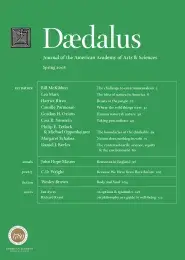Nature & human nature
People working in quite different fields with different methodologies and research agendas nevertheless often shared a veiled antipathy, trying to keep their distance from the implications of two ideas: Our minds are just what our brains non-miraculously do, and the talents of our brains had to evolve like every other marvel of nature. Their effort to keep this vision at bay was bogging down their thinking, lending spurious allure to dubious brands of absolutism and encouraging them to see small, bridgeable gaps as yawning chasms.
–Daniel Dennett, preface to Freedom Evolves1
Throughout human history, people have pondered their relationship to the living and nonliving components of the environments in which they have lived: Where did we and all the other living organisms around us come from? How long have we been here? In what ways are we different from other species? How should we relate to them? Do we have any responsibilities to them? If so, what are they?
Human cultures have generated a rich variety of answers to these and similar questions. Most of these answers reflect the intimate contacts people had with nature because nature, both benign and terrifying, influenced the consequences of most of their activities. Moreover, our ancestors could not have failed to notice the many striking similarities between themselves and some of the other species that shared habitats with them. For people lacking knowledge of both the age of the Earth and the processes by which life evolved, such similarities must have seemed puzzling.
The dominant view throughout Western intellectual history has been to posit an unbridgeable gap between humans and other animals. This belief has often been combined with the position that other species were created specially with human needs in mind:
It was with human needs in mind that the animals had been carefully designed and distributed. Camels, observed a preacher in 1696, had been sensibly allotted to Arabia, where there was no water, and savage beasts “sent to deserts, where they may do less harm.” It was a sign of God’s providence that fierce animals were less prolific than domestic ones and that they lived in dens by day, usually coming out only at night, when men were in bed. Moreover, whereas other members of wild species all looked alike, cows, horses, and other domestic animals had been conveniently variegated in color and shape, in order “that mankind may the more readily distinguish and claim their respective property.” The physician George Cheyne in 1705 explained that the Creator made the horse’s excrement smell sweet, because he knew that men would often be in its vicinity.2
. . .
